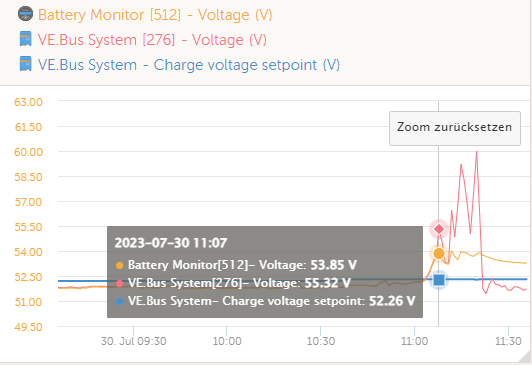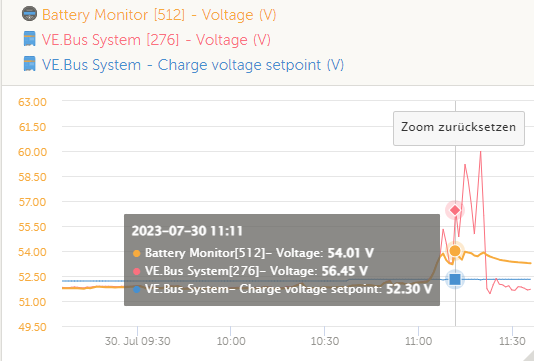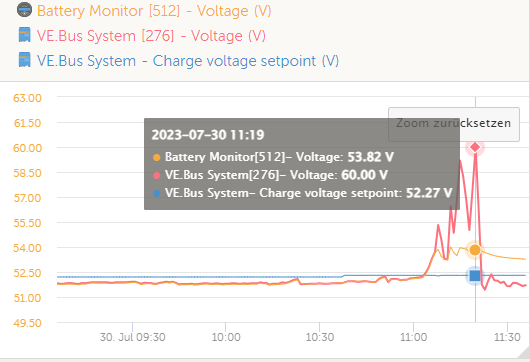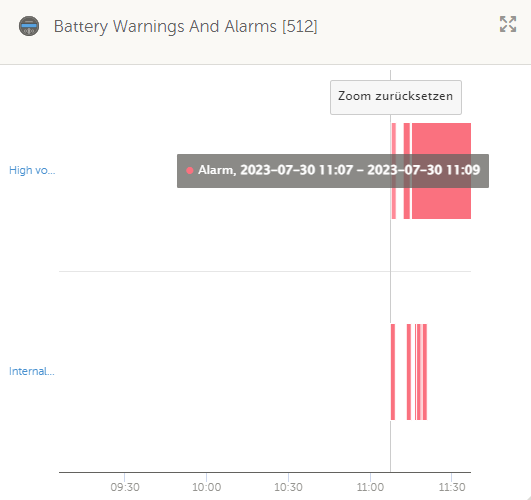Good day,
At the beginning an apology about my English. It is not my native language therefore possibly some translation errors...
We are working with Victron Equipment around a year now. We built in summary 6 Systems with different objectives.
- All Systems were built with Multiplus II 3000 + 5000
- Location Germany
- Battery -> Pylontech US3000C for all working Systems
We never had any problems with the ESS System itsself until End of last week on the latest system we built.....
-Multiplus II 3000VA 1x as ESS installed and configured
-Pylontech US5000 2x as Battery Master configured and Connection + Data Exchange established.
-no MPPT's
-AC coupled PV Inverter integrated with EM540 on primary site ( AC-IN )
-No Critical loads
1.: Initial Situation:
The system was completed in the middle of last week and should go into regular operation in the coming weeks (depending on the energy supplier).
To let the two installed US5000 perform an appropriate cell balancing we have activated the Multiplus in the setting " keep batteries charged".
Max Load Current was configured to 2A
DVCC Max Voltage was configured to 52,2V
2.: Loading to 95%
The Activation of these settings were on Friday , 28th of july
From now on the system was loading the brand new battery stacks until 96% as we all expected and we did it in the past...
Here The loading graph over 2 days
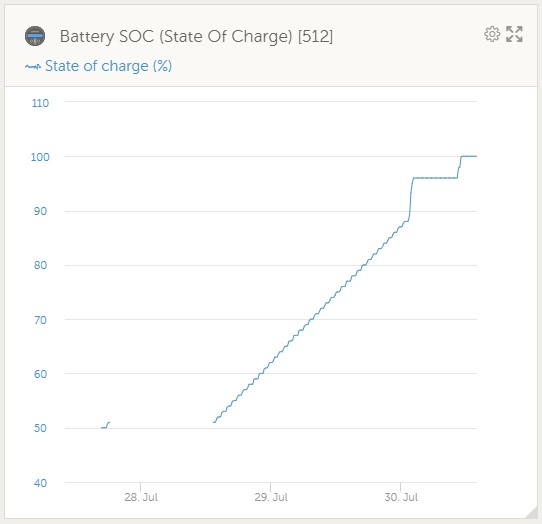
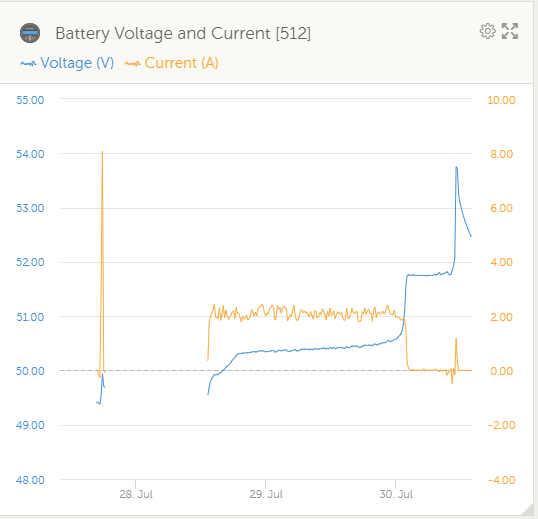
2.: Loading to 100%
On Sunday the 31/07/23 around 10:30 am we increased the DVCC max level by 0,1v to reach upper level
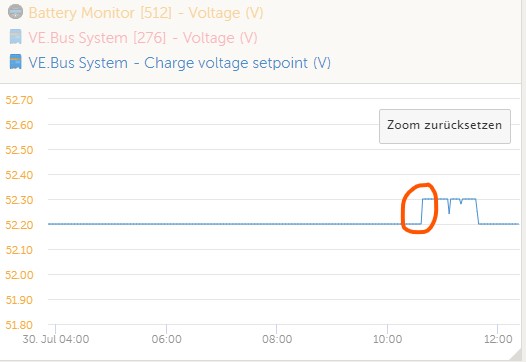
The following reaction was as we expected the increasing SOC and also decreasing CCL reported
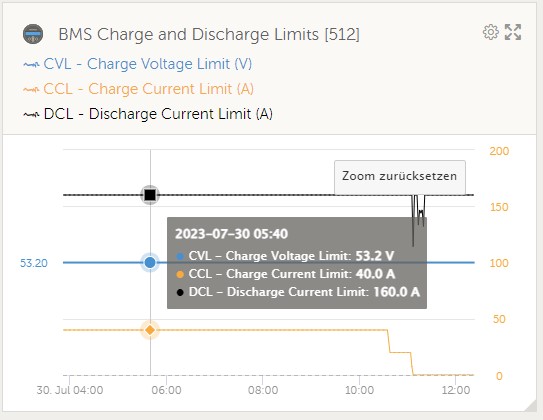
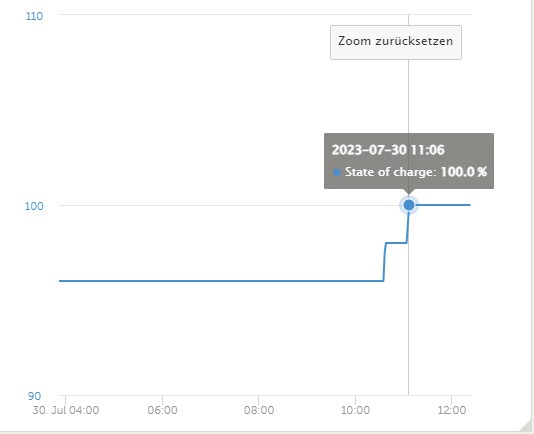
until this point the system worked within its parameters and without any problems in our opinion... The Batteries should now be on soc 100% and balancing internally for the first time
3.: Reaching 100 % -> Runaway of the multiplus DC Voltage
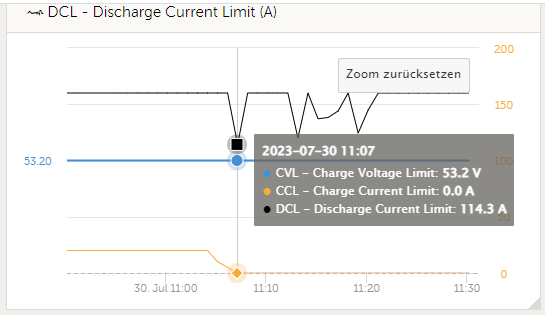
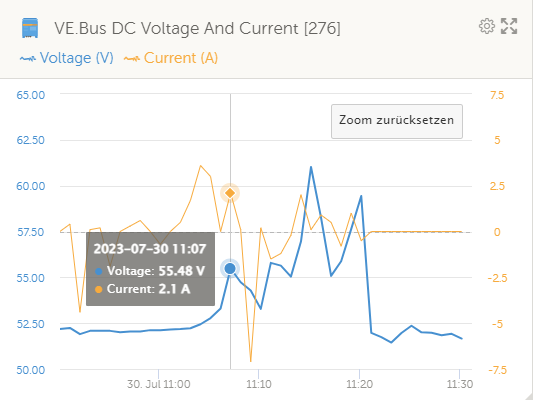
When reaching 100% SOC and the BMS retourned CCL=0 we had the first massive voltage peak reported on the dc System. we also can see this peak in the bms communication...

as an effect of this voltage spark the batteries were shutting down. we are not sure ift hey are dead now... if we activate them we have no errors on the batteries but we have no voltage on the main connectors.
The strange thing we are trying to understand..... why is the voltage increasing ... what was the trigger for doing that ? ...
and what is much more importand ... why can the multiplus increase the voltage over the configured levels of 52V/51V and also the DVCC max Voltage ?? In our opinion the spark is generated by the multiplus cause there is no other energy source on the dc side ...
As you can see in the screenshot we reached more than 61V as a max ????

We checked everything twice now... everything seems fine ... the only difference to the other systems we built successful and to the fullest satisfaction is that this system is only 1 Phase and all other systems aler 3p systems !?!?!?
What are the possibilities?
defective inverter ?
wrong Voltage measurement on the multiplus ?
we are glad to hear any food for thougt !! Currently we no longer know where to search ....
thx alex
epilogue:
BMS Communication to the pylons established without problems
VE BUS Communication MP2 / Cerbo gx established without problems
all Parameters configured for Pylontech as recommended


